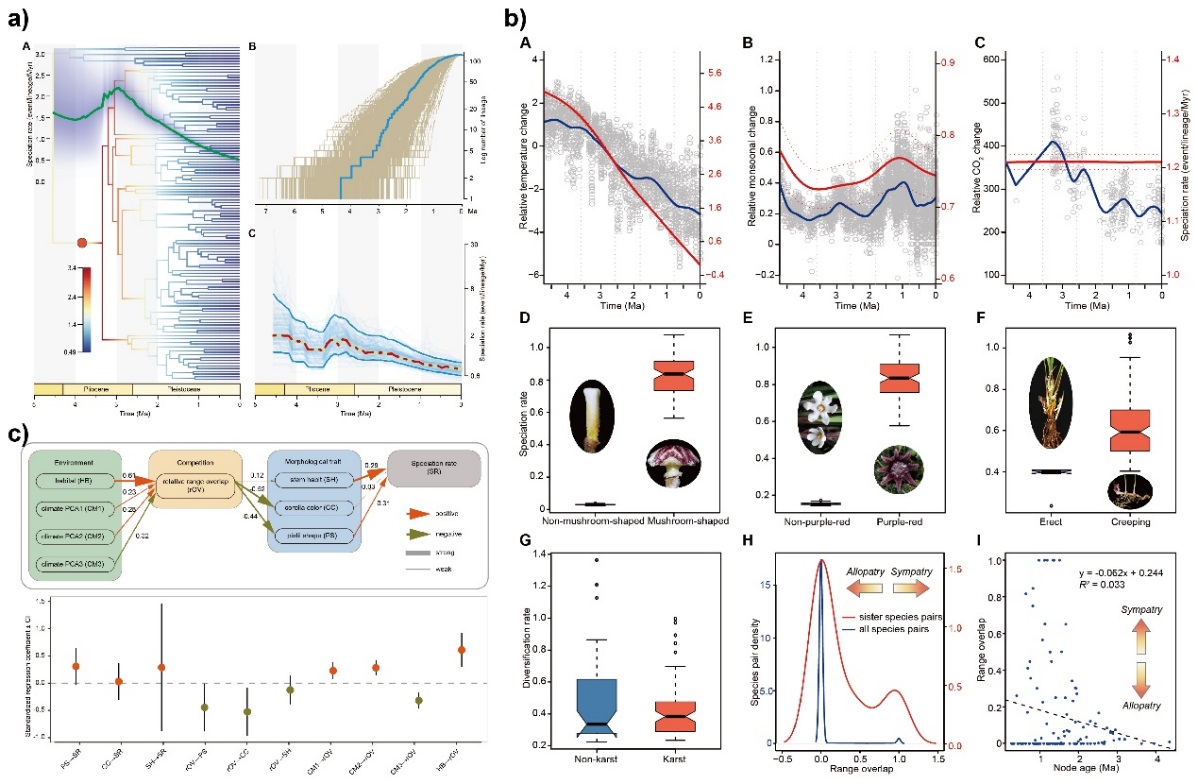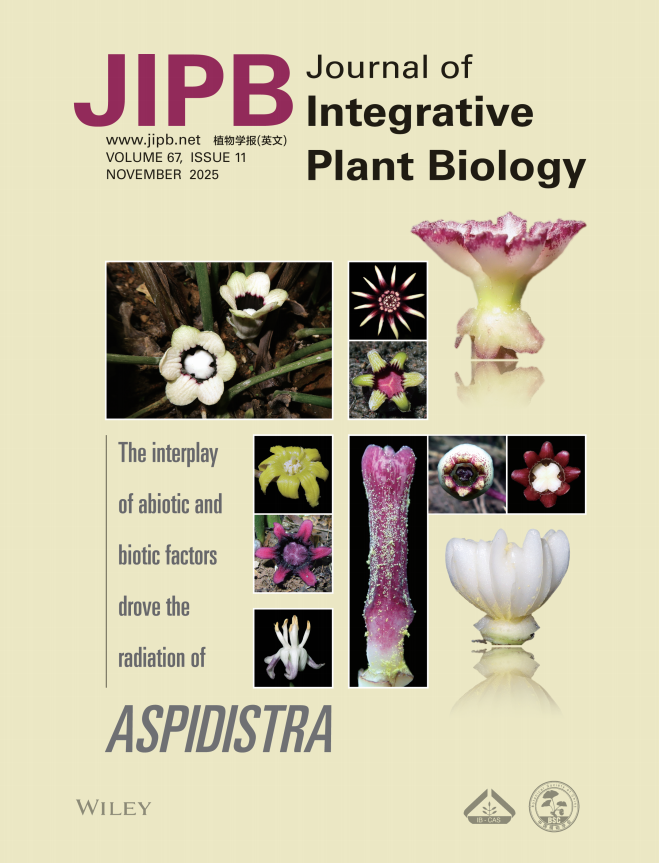Phylogenomics deciphers the mechanisms underlying the rapid radiation of Aspidistra (Asparagaceae)
Understanding how and why species diversify across time and space is a central question in evolutionary biology, with the key aim of revealing the drivers of rapid radiation. Currently, there are two main perspectives explaining the mechanisms driving evolutionary radiation, focusing on biotic and abiotic factors, respectively. The "Court Jester" model proposes that abiotic factors (such as climate fluctuations, mountain uplift, etc.) dominate large-scale species diversification, while the "Red Queen" model argues that biotic factors (such as key innovation, interspecific interaction, etc.) are the primary drivers promoting rapid radiation. Nonetheless, macroevolution throughout life's history has undoubtedly been affected by the combined influence of diverse biotic and abiotic factors. Most previous studies, however, have focused on only one factor or one category of factors, largely neglecting the synergistic interactions among them—specifically, how multiple abiotic and biotic factors jointly shape diversity patterns through spatiotemporal coupling.
Recently, a collaborative study by researchers from the South China Botanical Garden and the Guangxi Institute of Botany investigated the evolutionary radiation of the plant genus Aspidistra. This genus is a large group within the family Asparagaceae, with over 200 described species. In addition to its high species diversity, Aspidistra exhibits notable geographical distribution patterns and remarkable floral morphological diversity, including widespread parapatric and sympatric distributions, as well as diverse stigma mimicry traits. To elucidate the evolutionary history and underlying mechanisms of its radiation, the research team performed restriction site-associated DNA sequencing (RAD-seq) on 123 Aspidistra species and reconstructed the most comprehensively sampled and highest-resolution phylogenetic tree for the genus to date. Based on this robust phylogenetic framework, they estimated the divergence times of the genus and analyzed its diversification dynamics using multiple approaches. The results show that Aspidistra is a young lineage that originated at the Miocene–Pliocene boundary (5.49 Ma; 95% HPD: 3.8–7.57 Ma). During the Mid-Piacenzian Warm Period (2.6–3.6 Ma), its speciation rate significantly accelerated, reaching 2.27 species per million years (Figure 1a). This rate exceeds all previously reported plant speciation rates in the Old World flora, indicating that Aspidistra represents one of the fastest known plant radiations in this region. Furthermore, by applying multiple statistical models, the team demonstrated that various biotic and abiotic factors—including paleotemperature, the East Asian monsoon, interspecific competition, and pollination mutualisms—could act both independently and synergistically to drive speciation and diversification in Aspidistra (Figure.1-b, c).
This study provides new insights into how abiotic and biotic factors act both independently and synergistically to shape the speciation rate, contributing to a broader understanding of evolutionary processes in tropical and subtropical East Asian floras.
The related research, titled "The interplay of abiotic and biotic factors likely drove one of the fastest plant radiations from tropical-subtropical Asia", was recently published in the Journal of Integrative Plant Biology (JIPB), and selected as the cover story for that issue (Figure.2). Dr. YANG Lihua served as the first author, with Professors KANG Ming (South China Botanical Garden) and LIN Chunrui (Guangxi Institute of Botany) as the corresponding authors. This study was supported by Guangdong Flagship Project of Basic and Applied Basic Research, Biological Resources Programme, Chinese Academy of Sciences, and the National Natural Science Foundation of China. Paper link: https://onlinelibrary.wiley.com/doi/10.1111/jipb.70031

Figure 1. Abiotic and biotic drivers of Aspidistra diversification.(image by YANG et al)

Figure 2. The cover picture of JIPB (Volume 67, Issue 11).(image by YANG et al)
File Download: